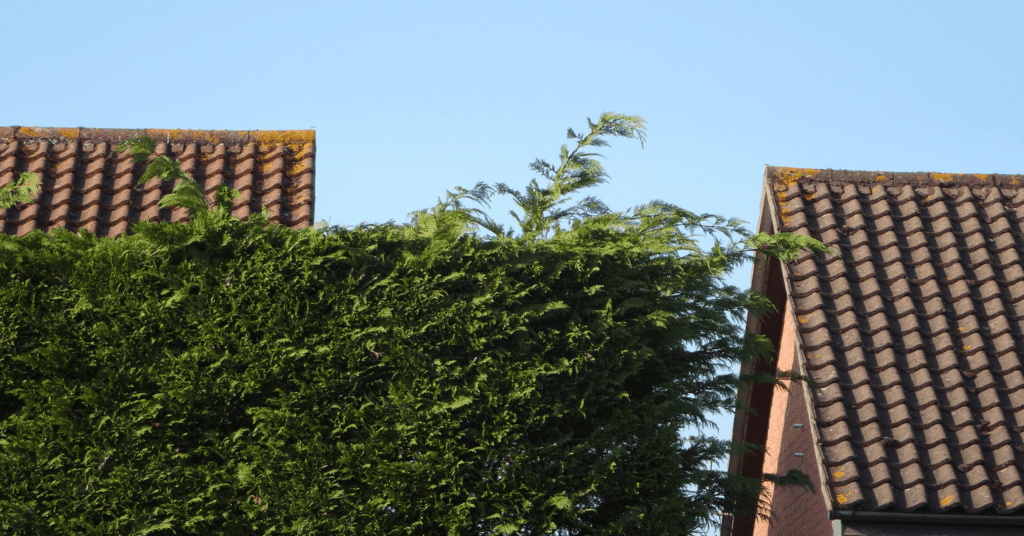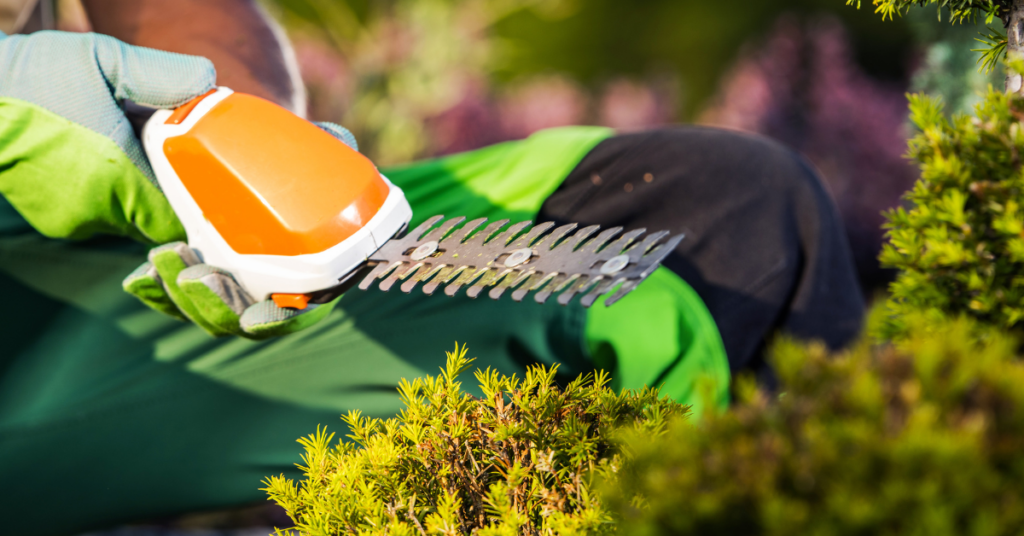Maintaining the beauty and health of your garden’s hedges requires not just regular care, but also an understanding of the right techniques and timings. In the unique climate of Victoria, BC, timing your hedge trimming is crucial for ensuring the health and beauty of your landscape. We explain the best times to trim, considering different hedge types. Learn about the risks of trimming at the wrong time, how to spot when your hedges need a cut, and when it’s time to call a professional. Whether you’re new to gardening or experienced, this article helps you keep your hedges healthy and looking great.
Ideal Season for Hedge Trimming
The ideal season for hedge trimming is often considered to be during the dormant period. In Victoria, BC, the ideal time for hedge trimming is usually during the late winter to early spring months, specifically from February to April, aligning with our mild coastal climate and helps with minimizing stress on the plants. Trimming during these months allows for shaping and controlling the growth before the onset of the spring growth spurt. It also helps in preventing the spread of diseases and pests, which are less active in cooler weather. However, it’s important to consider the specific type of hedge, as some varieties may have different pruning requirements. Just as there’s a best time to trim hedges, there’s also an optimal season for tree removal. Understanding What is the Best Time of Year to Remove Trees? can help you plan your garden maintenance schedule more effectively.
Significance of Hedge Type

When it comes to trimming, the significance of hedge type cannot be overstated. Different species of hedges have varied growth patterns, pruning needs, and optimal trimming times, which are crucial to consider for maintaining their health and aesthetic appeal. For instance, evergreen hedges like Cedar or Yew require trimming at different times and frequencies compared to deciduous hedges like Beech or Hornbeam. Evergreens may need more frequent trimming to maintain their dense foliage, often best done in late spring or early summer. Deciduous hedges, on the other hand, might be best pruned in late winter, when they are dormant and before the new growth begins.
The hedge type also dictates the pruning technique; some hedges respond well to hard pruning, while others may need a lighter touch. In Victoria’s climate, with its mild winters and relatively dry summers, timing and techniques might also vary slightly compared to other regions. Understanding the specific needs of your hedge type ensures not only the plant’s health and growth but also contributes to the overall biodiversity and ecological balance of the garden ecosystem in the region.Choosing the right tree variety for a hedge is crucial for creating the desired aesthetic. Our guide on Best Tree Variety To Use For A Hedge: Creating The Perfect Backdrop For Your Property can help you make an informed decision.
Risks of Trimming At The Wrong Time
Trimming hedges at the wrong time can lead to several risks and adverse effects on the plants’ health and growth. Pruning during the peak growth season, especially in late spring or summer, can significantly stress the plants, as they are directing energy towards growth and development. This stress can make hedges more susceptible to diseases and pest infestations. Trimming during harsh weather conditions, such as extreme cold or heat, can also damage the plant tissues, leading to stunted growth or even plant death.
Additionally, pruning during the bird nesting season can disturb local wildlife habitats. Improper timing can also result in a poor aesthetic outcome, with the hedge failing to achieve the desired shape or density. For flowering hedges, incorrect pruning can remove flower buds, leading to a lack of blooms in the following season. Therefore, understanding the specific needs of the hedge species and the local climate is crucial for determining the optimal pruning schedule. While maintaining hedges is important, it’s also crucial to recognize when a tree becomes a hazard. 6 Signs It Might Be Time To Remove Your Tree can guide you in identifying potentially dangerous trees in your garden.
Signs Your Hedges Need Trimming

Signs that your hedges need trimming can be both visual and practical in nature. Visually, if your hedges appear overgrown, with branches extending well beyond the desired shape and size, it’s a clear indicator they require trimming. Victoria’s conducive growing conditions often lead to rapid hedge growth, signaling the need for regular trimming to maintain shape and size. Uneven growth, with some areas denser than others, also signals the need for a trim to maintain uniformity. Additionally, the presence of dead or dying branches within the hedge suggests the need for pruning to remove these elements and promote healthier growth.
From a practical standpoint, hedges that start to encroach upon walkways, driveways, or other areas of your garden demonstrate the need for maintenance. Overgrown hedges can also block sunlight or views from windows, which is another practical sign they need to be trimmed. Regular trimming not only maintains the aesthetic appeal of your garden but also ensures the health and longevity of your hedges.
When to Call a Professional
Calling a professional arborist for hedge trimming can be a wise decision, especially for complex or large-scale hedge maintenance tasks. Arborists are trained in the science of tree and plant care, ensuring that trimming is done in a way that promotes the health and longevity of the hedges. They possess the knowledge to identify and address potential diseases or pest problems that might not be apparent to the untrained eye. Professional arborists have the right tools and safety equipment to efficiently handle tall or dense hedges, which can be dangerous for unskilled individuals to attempt. Their expertise is particularly valuable for pruning specialty or ornamental hedges, where precise cuts are crucial for maintaining the desired shape and aesthetic appeal.

Moreover, an arborist can provide valuable advice on the ongoing care and maintenance of your hedges, helping you keep them in optimal condition year-round. Hiring a professional ensures that the job is done safely, effectively, and with the best outcomes for the health of your hedges and the overall look of your landscape.
Conclusion
By choosing the right time for trimming based on your region’s climate and your hedge type, you can prevent damage, encourage robust growth, and enhance the overall aesthetics of your landscape. In addition to hedges, maintaining the health of various tree varieties in your garden is essential. For detailed guidance, check out How To Properly Maintain Each Variety Of Trees. Whether you tackle the task yourself or call in a professional arborist for more complex situations, proper hedge care contributes to both the beauty of your outdoor space and the wellbeing of your plants. For complex hedge or tree maintenance tasks, it’s often best to consult an expert. Discover the benefits of professional assistance in our article, Why Should You Hire An ISA Certified Arborist?
While this guide provides you with valuable insights on the best times and methods for trimming hedges, professional expertise can make a significant difference in the health and appearance of your garden. For homeowners in Victoria, BC, our dedicated team offers comprehensive tree services tailored to meet your specific needs. From precision hedge trimming to expert tree care, we bring the experience and dedication necessary to enhance the beauty and vitality of your outdoor space. If you’re seeking assistance in ensuring your garden’s health and aesthetics, look no further. Contact us today for top-notch tree services in Victoria, BC, and take the first step towards a more beautiful, well-maintained landscape. Let us help you achieve the garden of your dreams!


